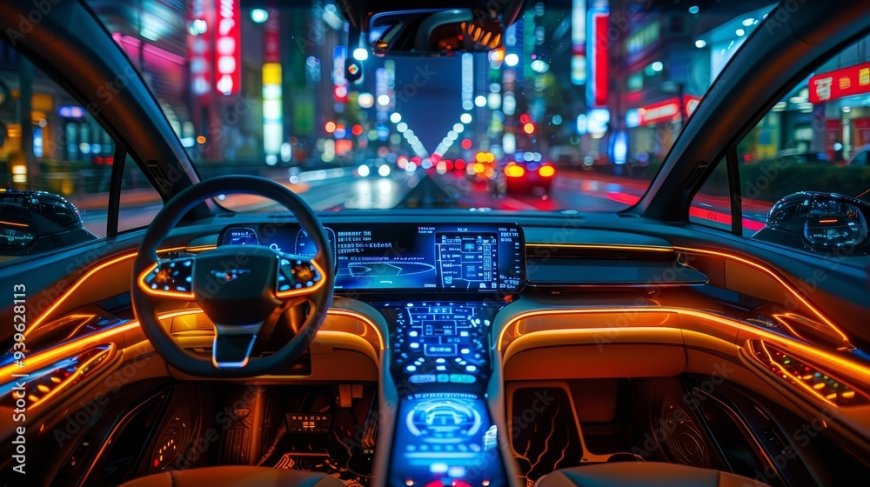The Road Ahead: When Will Self-Driving Cars Take Over Our Streets?
Self-driving cars are coming, but when will they be everywhere? Explore the future of autonomous vehicles, challenges, and the road ahead for full autonomy.

Autonomous vehicles (AVs) have long been a futuristic vision of mobility—one where cars drive themselves, eliminating human error and making roads safer. Companies like Tesla, Waymo, and Cruise have made significant advancements, yet fully autonomous cars are not yet a common sight.
So, what’s holding them back? When will self-driving cars become mainstream, and what challenges must be overcome before they dominate our streets? This article explores the current state of autonomous vehicles, the barriers to widespread adoption, and the future of self-driving technology.
1. Understanding Autonomous Vehicles: What’s the Current Status?
Autonomous vehicles operate using AI, cameras, radar, LiDAR (light detection and ranging), and real-time data analysis to navigate without human intervention.
The Society of Automotive Engineers (SAE) has defined six levels of automation, ranging from Level 0 (no automation) to Level 5 (full autonomy):
- Level 0: No automation (human-controlled).
- Level 1: Basic driver assistance (adaptive cruise control, lane-keeping assist).
- Level 2: Partial automation (Tesla Autopilot, GM Super Cruise – requires hands on the wheel).
- Level 3: Conditional automation (Mercedes Drive Pilot – can drive itself in certain conditions).
- Level 4: High automation (Waymo self-driving taxis – fully autonomous in mapped areas).
- Level 5: Full automation (a future where cars need no human intervention).
???? Where Are We Now?
Currently, most self-driving cars operate at Level 2 or Level 3, meaning drivers still need to be ready to take control. Waymo and Cruise have launched Level 4 robotaxi services in some cities, but widespread adoption is still years away.
2. The Key Challenges Preventing Full Autonomy
While the technology is improving, several obstacles prevent autonomous vehicles from becoming commonplace:
⚠️ A. Safety & Public Trust
- AVs must outperform human drivers in all conditions before gaining widespread acceptance.
- High-profile crashes involving Tesla’s Autopilot and Uber’s self-driving tests have raised concerns.
- Public perception remains skeptical, with many people hesitant to trust a car without a driver.
????️ B. Infrastructure Limitations
- AVs rely on well-maintained roads, traffic signals, and clear lane markings—something many cities lack.
- Poor weather conditions (heavy rain, snow, fog) confuse sensors and cameras, making autonomous driving unreliable.
- Smart city infrastructure (connected traffic lights, V2X communication) is needed for AVs to function seamlessly.
???? C. Regulatory & Legal Hurdles
- Laws regarding AVs vary by country and even by state, slowing down widespread deployment.
- Who is responsible in an accident? Liability issues remain unresolved, making insurance policies complex.
- Governments are still figuring out how to integrate AVs into existing traffic laws.
???? D. High Costs & Technological Barriers
- LiDAR sensors, AI computing, and autonomous software are expensive, keeping self-driving cars out of reach for most consumers.
- Cybersecurity concerns – AVs are connected to the internet, making them vulnerable to hacking.
- Human unpredictability – AVs struggle to anticipate human behavior, such as jaywalking or aggressive driving.
3. When Will Self-Driving Cars Become Widespread?
Experts predict autonomous cars will roll out in phases, rather than a sudden shift. Here’s a realistic timeline:
???? 2025-2030: Expansion of Robotaxis & Commercial AVs
- More cities will introduce self-driving taxi services (Waymo, Cruise, Baidu Apollo).
- Autonomous trucks for highway freight transport will become more common.
- Limited consumer availability for high-end Level 3 & Level 4 vehicles.
???? 2030-2040: Widespread Adoption in Urban Areas
- Smart city infrastructure will be more common, supporting AV integration.
- Costs will drop as technology becomes more affordable.
- Self-driving cars may be available for private ownership, but human drivers will still be required in some scenarios.
????️ 2040 & Beyond: Fully Autonomous Road Networks
- Level 5 vehicles dominate roads, with fewer human-driven cars.
- Governments may ban human drivers from high-risk areas (like highways) in favor of AVs.
- AVs will be integrated with smart roads, enabling near-perfect traffic management.
4. Which Companies Are Leading the Self-Driving Revolution?
Several companies are competing to bring full autonomy to reality:
???? Waymo (Google’s Self-Driving Division)
- Launched fully autonomous robotaxi services in Phoenix and San Francisco.
- Uses a combination of LiDAR, radar, and AI to navigate without human input.
⚡ Tesla (Elon Musk’s Vision for Full Autonomy)
- Tesla Autopilot & Full Self-Driving (FSD) – currently Level 2, but Musk claims Level 5 is coming soon.
- Uses a camera-based system rather than LiDAR, making it controversial among experts.
???? Cruise (GM’s Self-Driving Unit)
- Level 4 robotaxis operating in San Francisco, with plans to expand globally.
- Backed by General Motors and Honda.
???? Aurora & Embark (Autonomous Trucking)
- Developing self-driving semi-trucks to transform long-haul freight transport.
- Autonomous trucks could be on highways before passenger AVs due to simpler driving conditions.
5. The Future Impact of Autonomous Vehicles
When self-driving cars become mainstream, they will transform society in many ways:
✅ A. Safer Roads
- 94% of accidents are caused by human error—AVs could drastically reduce fatalities.
⛽ B. Reduced Traffic & Lower Emissions
- AI-driven cars will optimize traffic flow, reducing congestion.
- EV-based AVs will accelerate the transition to a carbon-free transportation system.
???? C. Cost Savings for Consumers
- Car ownership may decline, as ride-hailing becomes cheaper than owning a car.
- Insurance costs could plummet due to fewer accidents.
???? D. Job Disruptions
- Millions of truck drivers, taxi drivers, and delivery workers could lose their jobs.
- New careers in AI development, fleet management, and cybersecurity will emerge.
Conclusion: Are We Ready for an Autonomous Future?
While self-driving cars are advancing rapidly, full adoption is still decades away. Technical, legal, and social challenges must be resolved before we see Level 5 vehicles on every road.
However, by 2030, robotaxis, autonomous freight trucks, and AI-driven transportation networks will be much more common, setting the stage for a future where driving is fully automated.
???????? The self-driving revolution isn’t a question of if—but when. Are you ready for the ride?
What's Your Reaction?
 Like
0
Like
0
 Dislike
0
Dislike
0
 Love
0
Love
0
 Funny
0
Funny
0
 Angry
0
Angry
0
 Sad
0
Sad
0
 Wow
0
Wow
0



















































